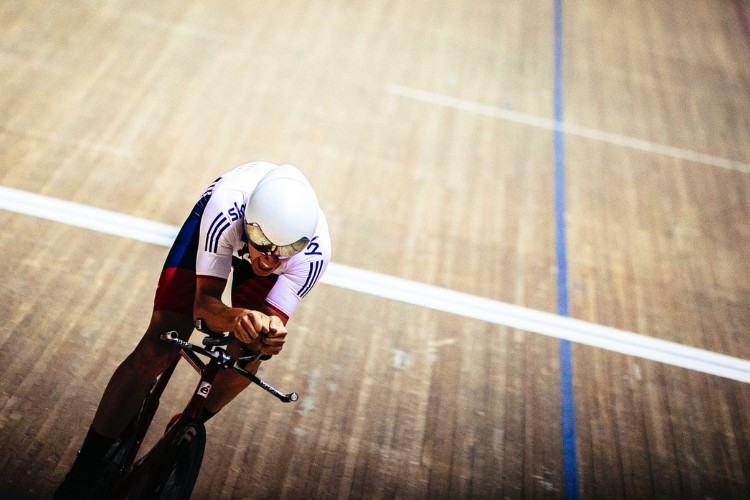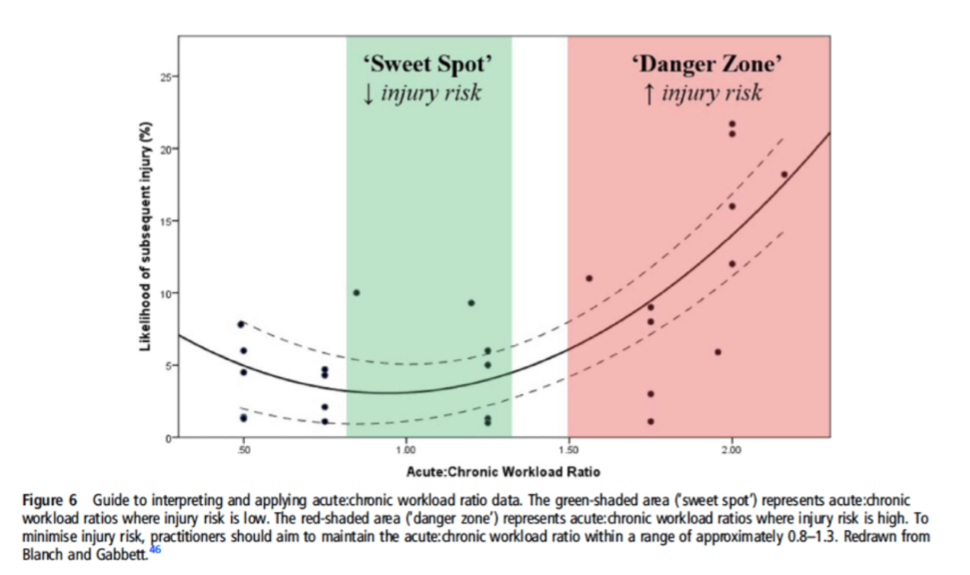
One of the most overlooked factors when analysing onset of injuries is training volume. Training volume is the combination of total time spent training and the intensity that training is performed at. What we are concerned about is acute (recent) overload in training volume which can exceed our body’s ability to adapt and recover from muscle stress. When this happens, we increase our likelihood of injury.
The graph below represents the acute:chronic workload ratio which basically means the training volume of 1 week of training versus the previous month’s training. Our sweet spot is a ratio of 0.8-1.3 and if we fall out of this training zone and train too much (or too little) we increase our risk of injury. To make it a bit simpler, if we increase or decrease our training volume by roughly 10-15% we’ll stay in that sweet spot.
Staying in the sweet spot will not only allow you to decrease the likelihood of injury but will improve performance by achieving good recovery and stronger muscle tissue if its allowed to adapt.
Working out how to stay in the sweet spot can be tricky but these are some strategies that we have found to work with our clients
- When learning a new exercise/skill make sure you incorporate it gradually into your training program, for example with every second session
- Incorporate rest days to allow for sudden acute spikes in training volume and achieve muscle tissue adaptation
- Account for small adjustments such as changes in: technique, footwear or equipment
- Use an RPE (rate of perceived exertion) scale for each session and times that by the length of time for each session to track your training volume. Below is an RPE chart that you could use. For example, if you considered an activity to be 6/10 and was performed for an hour its ‘score’ would be 6 x 60 = 360. Add up the ‘scores’ for each session of the week and that is your acute workload for that week.
Managing your training volume is a great way to minimise injury and improve performance. By allowing optimal tissue adaptation you can gradually get stronger and fitter and avoid taking time off due to injury.
This blog was written by David our physiotherapist at Health Space Clinics. You can find him at our Rozelle and Burwood clinics and if you would like to make an appointment please call us at 9810 8769.



